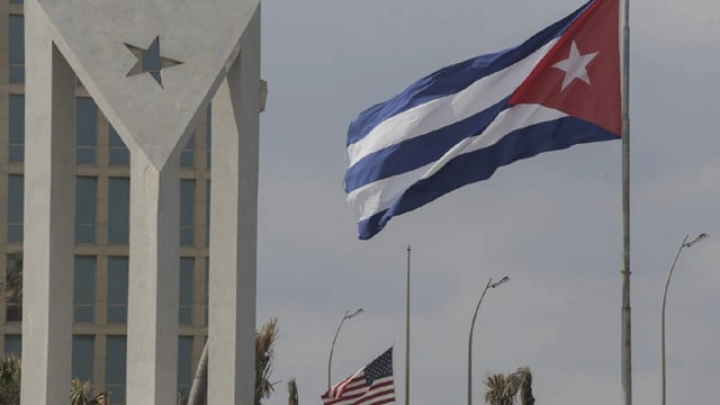Southern Florida is pounded by Hurricane Ian
Shining BD Desk || Shining BD
Hurricane Ian caused major damage in Fort Myers, Naples and elsewhere in the southern US state of Florida and was moving towards Tampa and Orlando, but also weakening as it moved inland.
Hurricane Ian brought high winds, heavy rains, storm surges and intense flooding to Florida on Wednesday, making landfall in the afternoon and moving inland through the evening.
Officials were preparing a major emergency response to help those affected by the storm. Around 1.8 million homes were without power on Wednesday evening according to tracking websites.
The hurricane, a Category 4 storm out of a possible 5 on the Saffir Simpson scale upon arrival, made landfall near the city of Fort Myers on Florida's western coast.
Footage from Fort Myers and nearby Naples showed major flooding, with floodwaters surging into homes and sweeping away vehicles.
As of 11 p.m. local time (2300 GMT/UTC) the National Hurricane Center put the eye of the storm close to the Sebring race circuit, east of Tampa and south of Orlando. It was moving north-northeast.

IN PICTURES: HURRICANE IAN BATTERS FLORIDA
Ian brings winds, rain and surge of ocean surf
Having left much of Cuba without power, Hurricane Ian made landfall in Florida on Wednesday, causing severe damage. Wind speeds were beyond 140 miles (225 kilometers) per hour in places as it hit the coast.
Biden pledges federal help
"This storm is doing a number on the state of Florida," said Republican Governor Ron DeSantis, who asked US President Joe Biden to approve a major federal disaster declaration providing a wide range of emergency aid to the entire state.
"We'll be there to help you clean up and rebuild, to help Florida get moving again," Biden said on Wednesday. "And we'll be there every step of the way. That's my absolute commitment to the people of Florida."
Upgraded overnight, downgraded after moving inland
According to the NHC, Ian had grown to an "extremely dangerous" Category 4 hurricane overnight, with top winds of 155 mph.
Dozens of shelters were set up after authorities had issued mandatory evacuation orders for 2.5 million people across Florida.
However, by Wednesday, it was already too late to flee as conditions were rapidly deteriorating. Electricity had been severed for more than 1 million homes out of just over 11 million tracked customers in the state of Florida, according to the tracking website poweroutage.us.
All commercial flights stopped operating in Tampa and Orlando's airports.
Orlando International Airport closed its doors as the hurricane moved north and inland
Heading into Wednesday evening Ian's peak wind speeds started to drop and the hurricane is expected to become a tropical storm as it moves further inland.
Migrant boat sinks
Shortly before Ian made landfall, a boat carrying migrants sank, leaving 23 people missing and four survivors.
Walter Slosar, Miami's chief patrol agent, said US authorities responded to a "migrant landing in Stock Island, Florida."
"Four Cuban migrants swam to shore after their vessel sank due to inclement weather," Slosar wrote on Twitter.
Hurricane intensified after hitting Cuba
National Weather Service director Ken Graham had said on approach that Ian would be "a storm we talk about for many years to come... It's a historic event."
DeSantis said thousands of personnel were assigned to respond to the storm with 250 aircraft, 300 boats and 1,600 high-water vehicles.
Hurricane Ian had battered Cuba as a Category 3 storm just less than 24 hours before nearing Florida.
Scientists have long sounded the alarm over how climate change can hike the intensity of extreme weather events.
Shining BD























